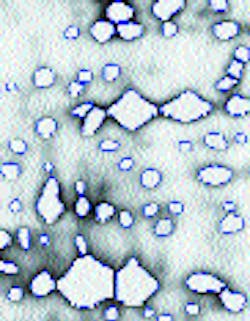Vision/imaging—traveling technologies
Machine-vision and imaging-processing systems are being designed by system integrators, developers, and in-house end users as cost-effective and user-friendly platforms that address specific application demands. Systems are flying in law-enforcement helicopters, sailing on large ships, functioning in research laboratories, and working in factory assembly lines.
Proteomics researchers use electrophoresis to separate and identify proteins in a mixture. They perform a PC-based analysis of gels that have been scanned by a personal densitometer to capture images for later analysis. To accomplish this task, says contributing editor John Haystead, special image-processing software detects and identifies all the spots on a gel, assigns coordinates and volume measurements, and quantitatively compares different samples (see p. 22).
For airborne law-enforcement missions, the Massachusetts State Police has installed both thermal and visual imaging equipment in its helicopters. Aided by CCD color cameras, this equipment has proven effective in performing fire, search, and rescue procedures. As reported by contributing editor Larry Curran, infrared images provide heat and temperature signatures, while color images offer visual information (see p. 29).
Based on the success of installing flight-data recorders in aircraft for obtaining performance and crash information, the International Maritime Organization is recommending the installation of similar recorders in large sailing ships. These devices, as spotlighted by editor Andrew Wilson, are planned for integration into shipboard systems to monitor video, radar, sonar, and other navigational data (see p. 39).
Although low-end machine-vision systems were built mainly for inspection tasks, the benefits and reliability of these systems have led many companies to use the technology for parts-control tasks as well. Says editor Andrew Wilson, several machine-vision systems vendors have introduced enclosed, proprietary systems to perform limited image-processing tasks such as pattern-matching and object location (see p. 47).
George KotellyEditor in Chief[email protected]
